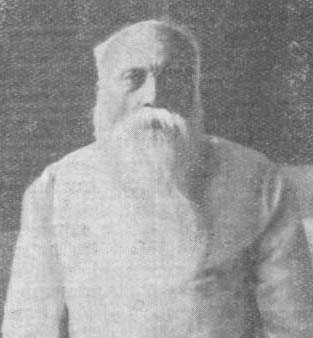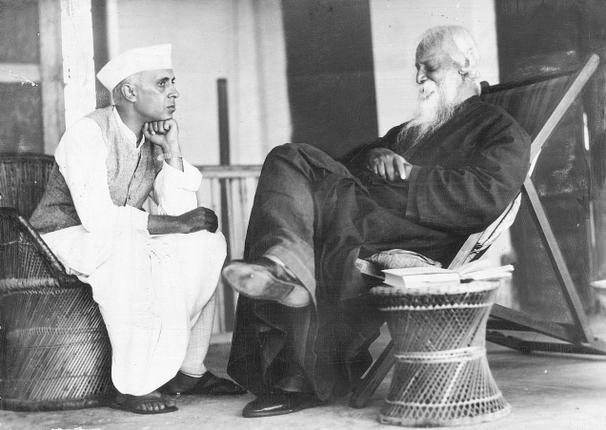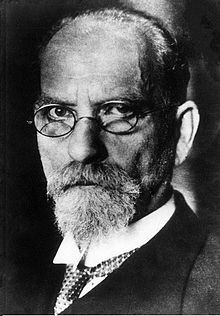by Monika Kirloskar-Steinbach
Minds Without Fear attempts to showcase the intellectual agency of Anglophone Indian philosophers living under coloniality. The book’s thirteen chapters are framed by the acute professional anxiety many of them experienced then, and its rippling effects which continue till today. Like their predecessors, contemporary Indian philosophers worry that colonialism has crippled their intellectual abilities. Authors Nalini Bhushan and Jay Garfield argue that this anxiety is simply a type of “false consciousness” (38). The book follows on the heels of their anthology Indian Philosophy in English: From Renaissance to Independence (Oxford University Press 2011). While the anthology simply collates the material of important Hindu philosophers living under coloniality and in the early years of the Indian Republic, Minds without Fear seeks to show how all the collated material hangs together. In addition, the latter also references the work of Muslim contemporaries, who were conspicuous by their absence in the anthology.

The introduction actively encourages readers to approach the book’s material with a fearless mind. One should not buy into any narratives that claim philosophical originality died in India under colonialism and has been dormant since. While the reasons driving the aforementioned anxiety should be taken seriously, one should neither be cowed down by it nor should it negatively affect our own engagement with, and evaluation of, the work of these “denizens” of “masala modernity” (318). Furthermore, one should be ready to concede that some of these positions curiously helped (and continue to help) bolster, even if inadvertently, several one-sided narratives about India’s philosophical past (a point I will return to below). Moreover: This period was “one of prodigious philosophical activity,” which contributed to the development of a philosophical nationalism within India and to a “global philosophical culture” beyond (5). Only minds without fear can take stock of the new narratives these very philosophers initiated—narratives which are still subcutaneously present in debates about Indian philosophy and about a public philosophy for the Indian nation. Only minds that are ready to cross disciplinary boundaries again and again, will be ready to plumb into the creative depths of some of these positions, even when these positions do not always neatly segue with their philosophical counterparts in Europe and America.
The first chapter sets the stage by sketching the intellectual alienation experienced by colonial Indian philosophers, as philosophers. The colonial situation confronted them with the self-image of European philosophy, which positioned itself as being neutral, self-evident, objective etc. This self-image was transported through a language (English) which was complicit in promoting the universalizability of this self-image too. Access to indigenous norms and ways of seeing and interpreting the philosophical significance of the world was severed inasmuch as educational institutions in colonial India adopted this ideologically-charged conceptual framework. As philosopher Krishna Chandra Bhattacharya (1875-1949), who spent his whole career at the University of Kolkata (then Calcutta), put it, “habits of soulless thinking that appear like real thinking” (8) were cultivated; the springs of creativity and authenticity were lost. The only cameo role reserved for a colonized intellectual was that of an obedient imitator.
This subjective, critical self-assessment forced upon a colonized philosopher the difficulties of finding an apt self-description for one’s own work. Did one engage in “Indian” or “Western philosophy?” One’s own positioning in these very colonial educational institutions came in the way of actively seeking to integrate indigenous ways of practicing philosophy into academic philosophy. The latter self-description was found inappropriate too. As Daya Krishna (1924-2007), an important figure in the development of philosophy in post-independence India, said: The “deepest anguish of an Indian intellectual” was that one was not treated as an intellectual equal in Europe (11). Struggling to find an appropriate self-description of one’s work, these intellectuals were also plagued by methodological concerns. Should one disinterestedly, and systematically, pursue philosophical truths like European colleagues? Not only would one then take up the cameo-role mentioned above, one would, more importantly, also stray from one goal important to the Indian tradition: liberation, mukti. Concentrating on the history of India’s “embalmed tradition” (10), an alternative canvassed by some European Indologists, was not viable either. It conflicted with these philosophers’ own endorsement of political independence for colonial India and with their mastery of, and immersion in, indigenous languages. The latter pointed to resources within the tradition itself, which were by no means completely embalmed. As Brajendranath Seal (1864-1938), the first King George V Chair in Kolkata, envisaged, some of these difficulties could be countered by engaging in “comparative philosophy.” Some critical voices found this third alternative wanting too. Daya Krishna, for example, warned that trivial comparisons with Indian philosophy would “turn it into a mere object of the European intellectual gaze” (15).
Chapters 2 and 3 deftly endeavor to upend several interrelated, conventional narratives still in currency. One such narrative doggedly holds on to the view that premodern India’s pristine, linguistic and philosophical purity was conserved by Sanskrit. In the wake of British colonialism, a “radical discontinuity” between this pristine past and colonial India was thought to have ensued (37). A second such narrative ties the onset of modernity to processes initiated under colonialism. According to this view, the professionalization of philosophy is considered a British import; scholarly philosophical prose, as well as the development of a private and public audience, are traced back to the advent of the British. A third narrative sets up a sharp dichotomy between a purportedly sublime and spiritual “East” as opposed to a rational “West.”

The authors don the hats of cultural historians to debunk such narratives. Epistemology, they show, was not transported to Indian shores by the ships of the East India Company. Philosophers in India were not “hermetically sealed in a subcontinental philosophical bell jar” (38). Intellectual communities like the karaṇam in medieval South India and the later munshī class in North India, produced written texts for a learned, trans-local, polyglot audience, despite certain internal differences. In both cases, the audience dictated the choice of an idiom and conceptual frameworks which were secular and not parochial. Communication with this large audience necessitated the medium of other (vernacular) languages and conceptual frameworks, which could be comprehended across different contexts. By virtue of their professional work, these intellectuals placed themselves—and their work—in a larger world, and engaged with it philosophically. Even later movements like the Navya-Nyāyā (albeit being centered around Sanskrit), did not step into unchartered territory when its proponents sought to engage in a philosophical dialogue with the outer world. In fact, their engagement with the work of Descartes and Gassendi (through their Persian and Sanskrit translations) is only another episode in this intellectual encounter. Having brought into view this trail of early modernity in precolonial India for its readers, the book turns to another salient question: If the sub-continent’s scholarly tradition was woven with a rich warp and weft of different languages, why did colonial intellectuals like Rabindranath Tagore (1861-1941) express their acute discomfort in using English? Why was English not quickly appropriated across the board as yet another potential vehicle of philosophical expression?
In offering a historical explanation for this discomfort, Bhushan and Garfield place their philosophical protagonists in a broader, political context. Notably, the younger ones were socialized in institutions which arose after the British refurnished India to better access its markets. In Bhushan’s and Garfield’s reading, Thomas Macaulay’s ‘Minute on Education’ (1835) becomes a “pastiche” (41) of a crafty, “middle-brow” employee of a global company, who sought to find the right balance between his Utilitarian mentor-supporters in England and his partners in India (English Orientalists and Hindu anglophiles). The ‘Minute’ mirrored the interests of this relatively-mixed coterie. It also established the centrality of English as the only language which could enable the future of a modern India, while simultaneously allowing the East India Company to grapple with, and further strengthen, its role in a “globalized labor market” (49).
Unsurprisingly, it was easy for younger colonial philosophers, or “Macaulay’s children” if you will, to believe that philosophy in India was a promise to be achieved in the future, in a language, which, as these institutions made them believe, was not, and could not, be their own. Their own classical languages (like Sanskrit or Persian) were “deadwood” of the past; only English, the “language of modernity the world over” (56), could lead them into a new future. (Notice how this reading directs attention to the manner in which this European vernacular fashioned itself as a language of philosophy under colonialism, at least in the Indian context.) However, as some of the then-young, political talents like Jawaharlal Nehru (1889-1964), who went on to become the first Prime Minister of independent India, seem to have guessed, the promise of education (and philosophy) in English came at a price: it would never become fully desi for one simple reason: Becoming desi, was akin to going native, “it was to fall from the norm” (58). To be philosophers, Indians had to, as their professional creed demanded, engage with (social) reality. However, the language in which they philosophized (English), operated with the understanding that it was simply not applicable to this reality. Thus, their philosophical ruminations in English were either removed from their own (social) reality or if they referenced the latter, their reflections were rendered unphilosophical. Contemporary Indian philosophy’s anxiety-syndrome was born.
Bhushan and Garfield are not caught up in the web of this anxiety. In their endeavor to show that it is ungrounded, Minds Without Fear now sets to work out different aspects of an “Indian Renaissance” (chapters 4, 5 and 6). Their choice in applying this highly valorized term to the Indian context is mainly two-fold. For one, it accords with the use of the term by some of the participants themselves, a prime example of which is the nationalist-philosopher-saint Aurobindo Ghosh (1872-1950). For another, we can ex post facto track certain “renaissance tropes” (64) in the works of individuals working in this period. These individuals perceived themselves as initiating a new future through an intercultural encounter, a future which would significantly differ from India’s recent, “degenerate” present, as well as from European modernity. Through their efforts at rejuvenating their tradition, these renaissance efforts took on an Indian inflection as well. Together, they distilled the essence of an Ur-Indian soul. This soul took on different garbs through its wandering in different historical epochs and also at the hands of those who cast it in these garbs.
The Indian-renaissance lens does important strategic work for the book’s larger philosophical project. The book, firstly, perceives philosophy as one of many social activities. Its practitioners’ views and interests are actively informed by their social positionings; they cannot honestly claim that their discipline allows them to retreat to a transcendental space which is completely uninflected by the social. Secondly, placing modern Anglophone Indian philosophy in a broad socio-cultural setting adheres to one core component of the self-understanding of Indian philosophical traditions themselves: In their philosophical musings, these traditions did not seek to sunder their relation with this world. Even highly abstract ruminations were grounded in this wordly life. Thirdly, and related to the other two, this lens allows us to draw in, and where necessary separate, different dimensions. Taken together, all these dimensions promise to reverse the “contemporary amnesia” that has befallen knowledge about contemporary Indian philosophy. Separating them, puts the spotlight on different moments of this intercultural encounter.
Deploying the cultural-history register, for example, one can ascertain how secularization processes initiated by social movements like the Brahmo Samaj and the Arya Samaj (founded in 1828 and 1875 respectively) went on to deeply affect the formation of modern Anglophone Indian philosophy. By layering a fine, permeable, political dimension over the first, we can perceive how Indians under colonialism challenged the “colonial industry of national narrative production” (91), which tended to portray India as a “subject nation” (92). In reaction, colonial Indian intellectuals developed a multiplicity of narratives underscoring the social unity of India (whether as a promise or as an actuality). Despite their internal diversity, all these narratives posited India as a “distinctive cultural space” (99), although some, warning about nationalism’s dangers, demanded a more sophisticated and sustainable alternative to better fit India’s intellectual heritage. Tagore, for example, pleaded with Gandhi to understand that the “egoism of the People” (i.e. nationalism) cannot be a viable alternative for “true” India, which for Tagore was “an idea and not a mere geographical fact” (142). Tagore’s wariness about the nation was shared, albeit from another perspective, by the pan-Islamist Muhammad Iqbal (1877-1938). Perceiving a hiatus between Islamic political theory and modern notions of a secular state, Iqbal, for his part, endorsed the development of communities within India. However, throwing out the baby (the Indian nation) along with the bath water (nationalism) was easier said than done for Macaulay’s children (see chapter 7). As the biting rhetoric of Aurobindo Ghosh observes, why should the “enlightenment [ideals] so kindly vouchsafed to us” (134) not be expressed and implemented by colonial subjects in India? Ghosh’s rhetorical question reflected the reality on the ground only partially. While Macaulay’s children were not allowed to implement their thoughts, they were indeed able to develop rich swaraj accounts, in which epistemological, ethical, political and aesthetic dimensions of social and political freedom were fleshed out (chapter 8). In this vibrant interaction about how best to (if at all) materialize Indian modernity, some voices noted the importance of spelling out modernity in India by placing her in a larger world. India’s intellectual traditions, they reasoned, did not place any heightened value on rejecting an idea simply because it arose elsewhere.
Layering another permeable dimension over this political one, we would be able to glimpse Hindu and Sufi remappings of idealistic trends provocated by encounters with speculative philosophy (chapter 9 and 10). But Bhushan and Garfield press upon the reader not to stop here. At what might appear to be a dead-end, they promise, await rich, desi accounts developed by colonial Indian philosophers (chapter 11). A closer study of their works will reveal just how fearless these philosophers really were. The lesser-known A. C. Mukerji (1888-1968), for example, drew on a host of resources (like Advaita Vedānta, Buddhist idealism, British neo-Hegelians) to achieve a plausible synthesis between idealism and realism, correspondence and coherence and metaphysics and science. His contemporary, the aforementioned K.C. Bhattacharya, leaned upon elements of Vedānta, Nyāya, Vaiśnava tantra, Kant and Husserl in explicating different modes of subjectivity, and drawing up nuanced interrelations between them and progressions in freedom. Imagistic, idealistic and spiritual thought were placed on a graded plane, all of which are grounded in an imaginative-reflective subject experiencing itself being in different modes in the world. But this is not all. Minds without Fear promises us a glimpse into yet another philosophical vista: Masala modernists like Mukerji and Bhattacharya expressed their deep dissatisfaction with a comparative philosophy, which in Mukerji’s words, “contented itself with discovering stray similarities between the Western and Indian thought” (258). Rather than treading down this barren path, they chose to draw upon all registers to make sense of the world they found themselves in (Bhattacharya, in fact, developed a theory of aesthetic experience which was related to his ruminations on subjectivity; see chapter 12). By engaging philosophically with a broader, global context, their philosophical efforts helped to renew and reinvigorate a living Indian philosophical tradition. They developed desi and modern Indian philosophical conceptions in an Indian vernacular (English). Interestingly, these were no lone rangers; their attempts at making sense of a hybrid world were matched by artists and aesthetes in the public sphere too (chapter 12).
We see how at least two of the aforementioned narratives begin to tumble under the weight of this analysis: (1) that colonialism brought intellectual activity to a complete standstill and, (2) that Indian philosophy is solely driven by spiritual concerns. Notice too how the—almost nonchalant—use of the renaissance-lens itself makes short shrift of the powerful narrative that the renaissance is unique only to Europe.
Famously, “comparative philosophy” began in India with a glint in B. Seal’s eye when he seized upon the opportunity afforded to him through, as he put it, the “fortuitous juxtaposition of two great cultures” brought on by colonialism (13). Today, this project has found its place in at least some niches in the modern global academy. Minds Without Fear makes us consider the possibility that simple compare-and-contrast exercises may be intellectually empty for reasons elucidated by some of Seal’s progeny. The book nudges its readers to seek a truly free knowledge, a knowledge which honestly faces up to its social grounding. With a wink towards those philosophers, who still await conclusive proofs of philosophical activity in non-Euroamerican philosophical traditions, the book would say: Sometimes, the “confirmation [may simply be found] in the kheer [a pudding-like dessert in India]” (69).
Nalini Bhushan and Jay L. Garfield: Minds without Fear, Philosophy in the Indian Renaissance
Oxford University Press, 2017
ISBN 135798642, 334 pages, US$49.95 (hbk)
Monika Kirloskar-Steinbach is a professor in the Department of Philosophy at the University of Konstanz.


